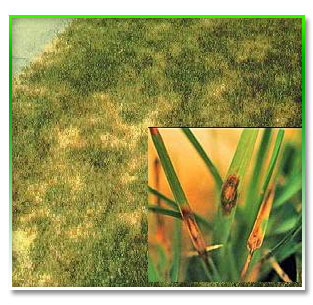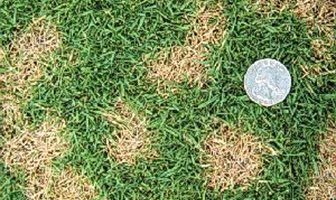Lawn Fungus and Diseases
Read MorePosted on: Aug 29, 2023Raunie
Introduction
It’s tough to determine what is causing an odd spot that just popped up on your lawn and you may think it is a lawn fungus or disease. There are a number of reasons why the plant is showing signs of stress or damage. For instance, it could be insects, disease, soil quality, environmental (i.e. too much shade, large tree roots). But most often it is the general maintenance habits – cutting too low, dull mower blade or watering at the wrong time. It is important to know how to identify these issues as well as the different treatment options to ensure your lawn is getting what it needs to be healthy, lush and, green. Three common lawn diseases in Ontario are as follows:
Leaf Spot

This is something that is very common this year in Ontario due to the moderately warm temperatures and the excess of rain we’ve had throughout the growing season. It primarily affects the grass blades and presents itself as small circles or lesions on the blade with dark borders. Leaf spot typically occurs with a varying temperature (i.e. warm days, cool nights). It also occurs more prevalent in lawns that are cut too short and have a weak root system. Unfortunately, this disease attacks our primary turf type, Kentucky Blue Grass so it is key to identify this early before it spreads throughout your whole lawn.
Treatment Options
By raking your lawn each spring and fall and removing the debris that is pulled up, you will significantly decrease this disease from spreading from season to season. This is because the spores stay on the grass blades over the winter so if not removed, they will become active again in the spring. Prescribing to a proper fertilizing procedure with the correct blend of nitrogen will help avoid the overfertilization that typically results in leaf spot. Also, it is key to follow proper habits such as: Cutting at a height of 2.5 inches and watering early in the morning to prevent excess moisture from sitting on the grass is also very helpful not just for this issue, but for your overall health of the grass.
Dollar Spot

This disease is common in Ontario lawns in the hot summer months. The key identifier is circular spots that are approximately 5-7cm in diameter and appear bleached in the center. The grass blades will show yellow hourglass shaped stress lesions and as the disease develops the small circle will start to expand so it is important to catch this as early as possible
Treatment options
Primarily a light fertilizer with a moderate nitrogen content (primarily at a 25-0-5 blend) applied evenly throughout the area will help encourage new growth. Dollar spot thrives in areas with lower nitrogen content but in this case a little goes a long way. Another treatment is to change the environment around the affected spots by increasing air flow in the soil, with an aeration as well as reducing shade and encouraging more photosynthesis within the lawn will also help cure this common lawn disease.
Summer Brown Patch (Rhizoctonia)

Often summer brown patch looks like a large circle with discoloured edges and what appears to be healthy grass in the center. It thrives in our hot, humid July weather where the temperatures are between 25-30 Degrees Celsius and affects mostly bent grass and perennial rye grasses which are common in Ontario. This main culprit of this disease is incorrect watering habits where there is an excess of moisture that sits on the lawn for several hours. Additionally, lawns that have a high level of thatch that retains excess moisture and prevents soil absorption or evaporation.
Treatment options
Annual raking with a stiff rake to reduce the layers of thatch that build up over time. The best way to treat this issue is by changing your watering habits. Most commonly this is found in lawns that are watered at night where, as mentioned above, doesn’t allow the excess moisture to be absorbed. So, the best time to water your lawn is in the early morning, between 6am-9am to allow for the summer sun and day time heat to take care of any extra water. Finally, long and deep watering done with less frequency (twice a week) will always help not just with this problem but your lawn will be a happy camper over all!
Conclusion
Certainly, when investing in your lawn it is always best to know at least the basics to these common problems to maximize your success in the health and wellness of your grass. For this reason, common habits are most often the best defense against a lot of issues that can pop up so be sure to follow the proper watering, cutting and maintaining instructions from your trusted professional.

